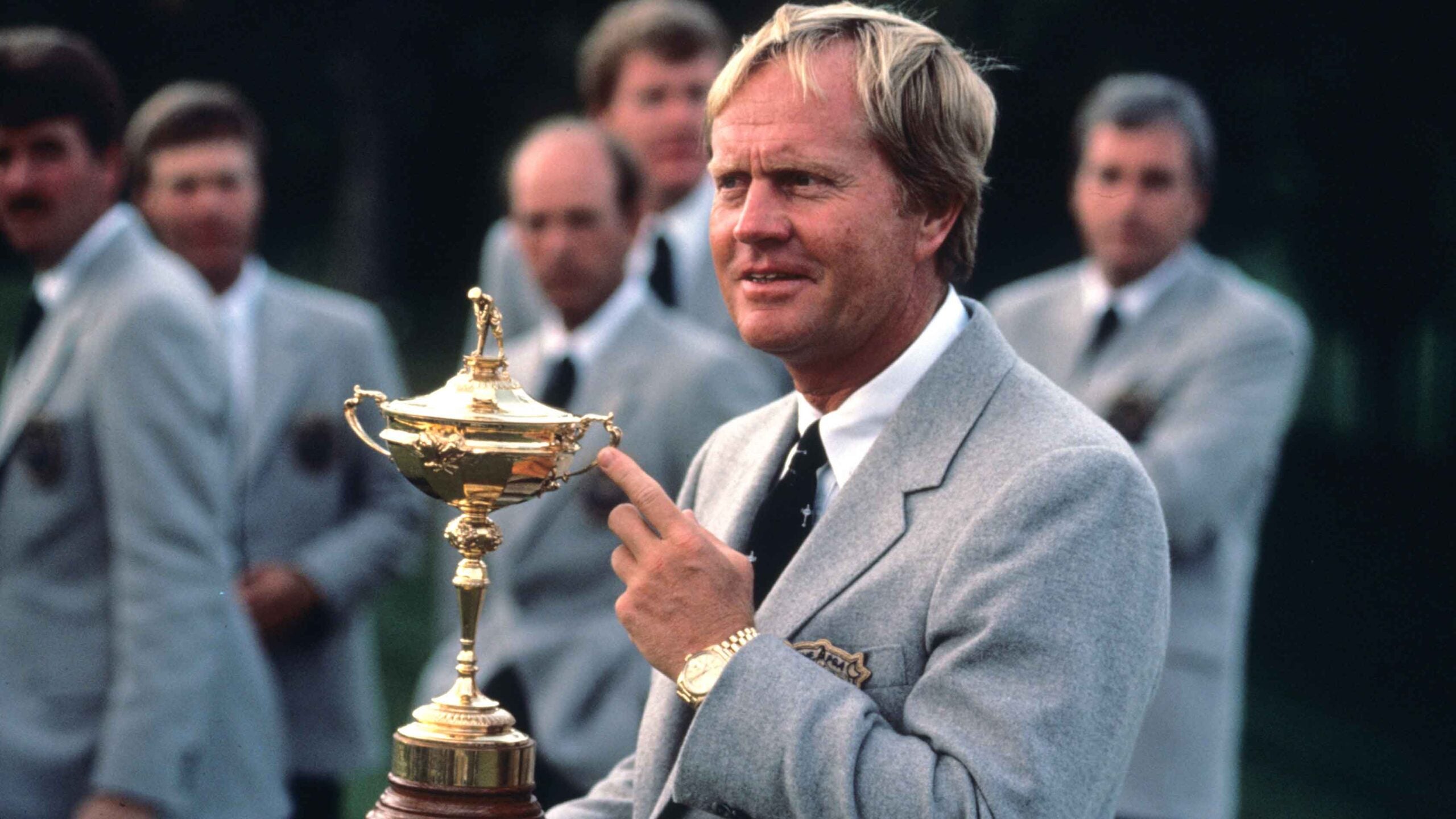HAVEN, Wis. — Advertising, author Gore Vidal once declared, is the only art form America ever invented, but if the 43rd Ryder Cup were to be decided on the ingenuity of team messaging, the home side would be headed for defeat.
Europe is on a conspicuous charm offensive in Wisconsin, with Wednesday’s uniforms in Green Bay Packers colors and Cheeseheads being tossed into the stands in lieu of autographs that are banned in the COVID era. The Cathedral of the Sainted Vince Lombardi at Lambeau Field is an hour north of Whistling Straits, and Europe’s captain Padraig Harrington admitted that he figured most fans here early in the week would be regular worshippers in those pews.
But the differences between Europe and the U.S. go beyond gestures. Call it a tale of two tapes.
On Tuesday, Harrington released a video designed to reinforce both pride and purpose among his team by illustrating just how small their merry band is. Only 164 men have ever played Ryder Cup for Europe, a total dwarfed by the number of people who have summited Everest (5,780) or been in space (570). Each player was given a number representing his position on that continuum. Lee Westwood, who debuted in 1997, is No. 118. Rory Mcllroy is No. 144. All the way up to Bernd Wiesberger, the last qualifier for Harrington’s squad, at No. 164.
“I’m very, very proud to have that number for life. Everybody is buzzing,” Wiesberger said. “The individual aspect of the game that we have, but this week we all come together as 12. Everybody has their number and nobody can ever take it from them.”
Harrington’s video garnered widespread attention, but its intended audience was 12: the guys in Europe’s team room. The captain found his target and achieved his mission: team-building.
Compare that with a video tweeted by Team USA on Tuesday evening. It was a stylistic piece of auteurism with enough staccato camerawork and upbeat music to feel like homage to the opening credits of Miami Vice. Its 27 seconds showed Brooks Koepka walking across the range at Whistling Straits to briefly chat with Bryson DeChambeau, and while its intended audience and goal was just as obvious as the Europeans, the result was much less successful.
The video had the slick look (and viscous aftertaste) of corporate pandering, the type of hollow virtue-signaling beloved by companies who like to tout values they don’t actually practice. What it delivered was all the authenticity and warmth of a hostage tape, and rather than put to bed the tired narrative about the Brooks-Bryson feud, it merely served to remind folks of its existence. All it lacked was Saddam Hussein’s buffoonish spokesman “Comical Ali” denying reality.
Nothing to see here!
No feud, we’re united under the flag.
Move along everyone!
The ham-fisted effort to squash a lingering storyline also exposed a greater truth that can’t be encouraging for fans of Team USA.
While Harrington’s film was intended to galvanize his team room, Stricker’s apparent aim was to manage outside perceptions of his, to pre-empt what will be the most obvious finger-pointing in the event of a U.S. loss on Sunday.
“We’re covering our ass,” one member of the American team’s support staff told me derisively. “If we lose, our team knows we can’t just say, ‘We lost.’ We know fans will want someone to blame.”
That’s true for any losing side at a Ryder Cup, and there’s never a shortage of blame (or reasons for defeat). Stricker knows that if his team is beaten the feud will immediately be presented as a contributing factor, no matter how specious the supporting argument. The video was a well-intentioned effort to inoculate two of his players against that potential criticism, but the timing of it may count as a strike against Stricker.
It’s OK for DeChambeau and Koepka to dislike each other. They’re certainly not the first Ryder Cup teammates to have a frosty relationship. But any attempt to market a friendlier relationship needed to happen long before this week. If the effort succeeded, great. If it failed, at least it wouldn’t be a distraction on-site. As it is, it failed and was a distraction.
The best way to protect Koepka and DeChambeau from unwarranted criticism in the event of a loss is to let them focus on the business at hand — preparing to play winning golf — rather than wasting their time with unconvincing theatrics.








